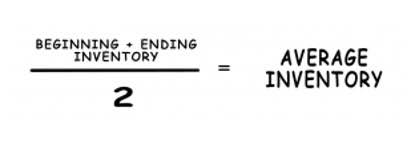
The second entry requires expense accounts close to the Income Summary account. To get a zero balance in an expense account, the entry will show a credit to expenses and a debit to Income Summary. The closing entry will credit Supplies Expense, Depreciation Expense–Equipment, Salaries Expense, and Utility Expense, and debit Income Summary.
Four Steps in Preparing Closing Entries
- The credit to income summary should equal the total revenue from the income statement.
- We do not need to show accounts with zero balances on the trial balances.
- The T-account summary for Printing Plus after closing entries are journalized is presented in Figure 1.31.
- Why was income summary not used in the dividends closing entry?
- In other words, the income and expense accounts are “restarted”.
Retained Earnings is the only account that appears in the closing entries that does not close. You should recall from your previous material that retained earnings are the which of the following is not a closing entry earnings retained by the company over time—not cash flow but earnings. Now that we have closed the temporary accounts, let’s review what the post-closing ledger (T-accounts) looks like for Printing Plus. It is important to understand retained earnings is not closed out, it is only updated. We see from the adjusted trial balance that our revenue accounts have a credit balance.
Close Revenue Accounts
The purpose of the closing entry is to reset temporary account balances to zero on the general ledger, the record-keeping system for a company’s financial data. After the closing journal entry, the balance on the drawings account is zero, and the capital account has been reduced by 1,300. Temporary accounts are accounts in the general ledger that are used to accumulate transactions Bookkeeping for Consultants over a single accounting period. The balances of these accounts are eventually used to construct the income statement at the end of the fiscal year. In a sole proprietorship, a drawing account is maintained to record all withdrawals made by the owner.
Movement on the Retained Earnings Account

We do not need to show accounts with zero balances on the trial balances. A temporary account is an income statement account, dividend account or drawings account. It is temporary because it lasts only for the accounting period. At the end of the accounting period, the balance is transferred to the retained earnings account, and the account is closed with a zero balance. For each temporary account there will be a closing journal entry.
What are Closing Entries?

This means that it is not an asset, liability, stockholders’ equity, revenue, or expense account. The account has a zero balance throughout the entire accounting period until the closing entries are prepared. Therefore, it will not appear on any trial balances, including the adjusted trial balance, and will not appear on any of the financial statements. It is permanent because it is not closed at the end of each accounting period.
The third entry closes the Income Summary account to Retained Earnings. The fourth entry closes the Dividends account to Retained Earnings. The information needed to prepare closing entries comes from the adjusted trial balance. All temporary accounts must be reset to zero at the end of the accounting period.
- The following video summarizes how to prepare closing entries.
- Now for this step, we need to get the balance of the Income Summary account.
- The income statement summarizes your income, as does income summary.
- The retained earnings account is reduced by the amount paid out in dividends through a debit and the dividends expense is credited.
- For example, the revenues account records the amount of revenues earned during an accounting period—not during the life of the company.
- The first part is the date of declaration, which creates the obligation or liability to pay the dividend.
To do this, their balances are emptied into the income summary account. The income summary account then transfers the net balance of all the temporary accounts to retained earnings, which is a permanent account on the balance sheet. As mentioned, temporary accounts in the general ledger consist of income statement accounts such as sales or expense accounts. When the income statement is published at the end of the year, the balances of these accounts are transferred to the income summary, which is also a temporary account. Companies use closing entries to reset the balances of temporary accounts − accounts that show balances over a single accounting period − to zero. By doing so, the company moves these balances into permanent accounts on the balance sheet.

These permanent accounts show a company’s long-standing What is bookkeeping financials. Notice that revenues, expenses, dividends, and income summary all have zero balances. The post-closing T-accounts will be transferred to the post-closing trial balance, which is step 9 in the accounting cycle. The first entry requires revenue accounts close to the Income Summary account.
Step 3: Close Income Summary to the appropriate capital account

This is an optional step in the accounting cycle that you will learn about in future courses. They are special entries posted at the end of an accounting period. The T-account summary for Printing Plus after closing entries are journalized is presented in Figure 5.7. Let’s explore each entry in more detail using Printing Plus’s information from Analyzing and Recording Transactions and The Adjustment Process as our example. The Printing Plus adjusted trial balance for January 31, 2019, is presented in Figure 5.4. State whether each account is a permanent or temporary account.




